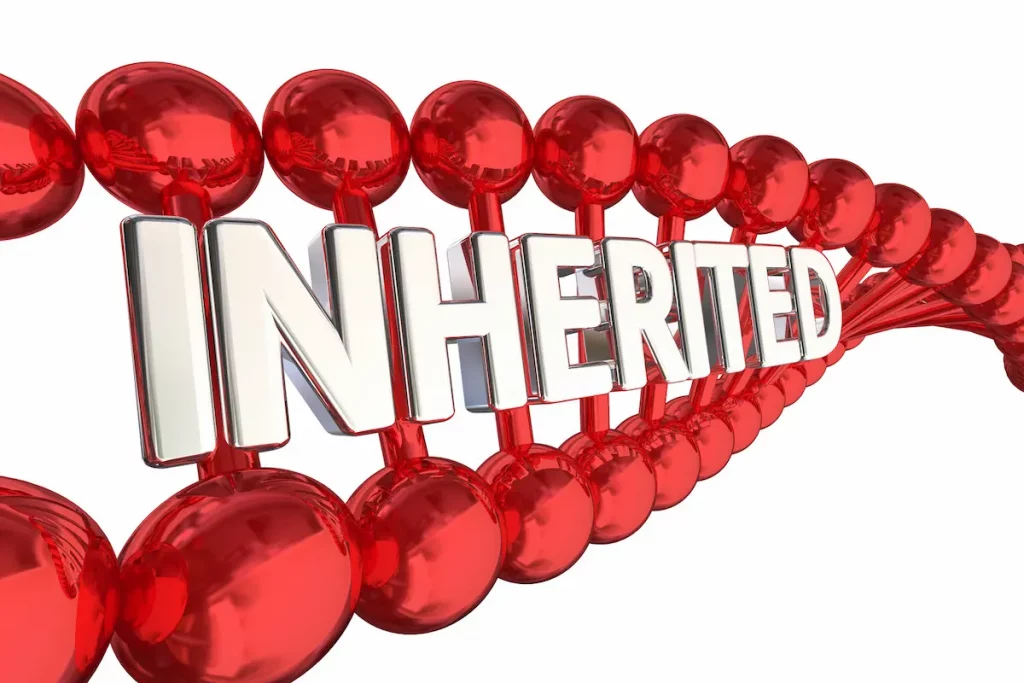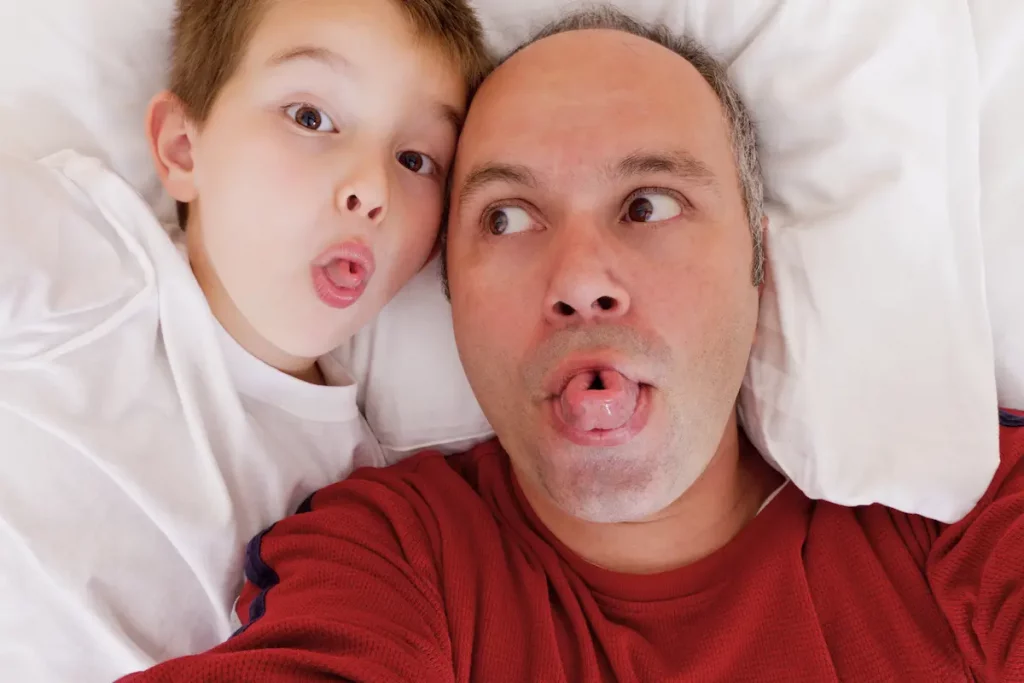Family traits are traits that are expressed among family members. These traits may look different to people in other families. Family traits are inherited, which means that they are passed down from one generation to another. Family traits may be physical or not (such as illnesses vs. personalities).
If you have ever heard the words “family trait,” you might be curious as to exactly what it means. Our team has scoured the web for definitions, answers, and so much more. Read on to learn more.
Continue reading to find out examples of family traits, why family traits are important, and more.

Related Reading: Parent Meaning and Definition
What Is a Family Trait?
Every so often, we are casually going about our day, and something piques our interest – be it an unusual phrase, new concept, or unfamiliar word. If you have just recently started exploring topics like genetics, biology, or psychology, there are undoubtedly no shortage of new words, concepts, or phrases to pique your interest.
One such example is “family traits,” which you may or may not have seen repeatedly come up. So, what exactly is a family trait? Before we explore the definition of a family trait, let’s first look at the definition of “traits.” Oxford Dictionary defines a trait as “a distinguishing quality or characteristic, typically one belonging to a person” or “a genetically determined characteristic.”
Family traits refer to the specific origin from where the traits have derived. They are traits passed down from one generation to another within a family. So, to put it in short, these traits are hereditary. It is important to note that family traits are traits shared by family members.
While some people might argue that learned behavior is a family trait (such as speaking the language your parents taught), there is disagreement over whether these characteristics are genuinely passed down from generation to generation.
Traits that are not inherited genetically, such as learned behaviors, might best be described as family tendencies. For instance, a son and his grandparents may suffer from anxiety, but his parents do not. As anxiety, in this case, is not typically seen as genetically linked, it will be considered a family tendency.
Other family tendencies may include a tendency to enter a particular field of work, be overweight, or get up early in the morning. In light of this, this article will only focus on traits that experts agree constitute family traits (i.e., genetically inherited traits). So, have you ever had a stranger tell you that you and your sibling look alike?
What about you and your parents? If you have ever heard this comment before, it is likely due to an expression of family traits you and your family share like big brown eyes or curly hair. Interesting, right? These expressions of traits are similar in one family and might look different in other families.
How Do Family Traits Work?
So how do family traits work? To understand family traits, we first need to understand how traits work. Traits are inherited from genes. These genes can come in different variations called alleles. For example, alleles for the hair color gene may be brown, black, blonde, or red. Some of which (like brown) are dominant and some of which (like red) are recessive.
On the other hand, phenotypes are observable characteristics of the genes expressed. So, if you have black hair, then we can say that black hair is part of your phenotype. So, what goes into making you, you, is truly a unique and complex process. We receive one allele from our father and one from our mother from inception.
These alleles determine our specific traits (or phenotypes), making you uniquely you. Nevertheless, it is essential to note that not all gene variations are not all the same. Alleles come in two forms: dominant or recessive.
If you inherit one dominant allele from your father and one dominant allele from your mother, the gene’s expression (phenotype) will be dominant. For instance, if you inherit brown alleles from both your parents, you will have brown eyes. Likewise, if you inherit one dominant allele and one recessive allele, your gene’s expression will also be dominant.
For instance, if the dominant allele is brown eyes and the recessive allele is blue eyes, you will have brown eyes. People who inherit one dominant allele and one recessive allele are considered carriers of allele genes as they carry the gene, but the gene expression is not visible.
If you inherit one recessive allele from your father and one from your mother, your gene’s expression will be recessive. So, if the recessive allele is blue eyes which you inherit from both your parents, you will have blue eyes. This also means that you only have the blue eye allele to pass to your own offspring.
The main takeaway is that you need just one copy of a dominant allele for that gene to be expressed, I.e., dominant genes are always expressed when present. On the other hand, for recessive alleles to be expressed, you need two copies of recessive alleles (one from each parent).
Although we addressed and emphasized the role of dominant and recessive genes, the heritability and expression of genes are complex and can consist of unpredictable patterns. When it comes to dominant and recessive traits, the terms can be misleading and confusing at times.
“Dominant” does not necessarily mean it is the most common trait in a population. It just means that it is expressed over a recessive trait. For example, many Scandinavian countries have high populations of blue-eyed citizens.
As blue eyes are considered a recessive trait, this would mean that those countries have a high frequency of recessive traits for that specific gene. Or you might find some families have rare conditions due to dominant genes (like hemophilia); however, those conditions are considered rare in the general population.
Examples Of Family Traits
Below we will list some common, intriguing, and unusual family traits you may share with your family members. Continue reading to find out more.
Hairline Family Trait
Did you know that hairlines are an expression of different family traits? Sounds odd, right? If you have a keen eye, you might have observed that some people have straight hairlines, while others have hairlines that come to a peak on their forehead (otherwise known as widow’s peak).
The widow’s peak is a dominant trait. If a family possesses this allele, you will often find that most family members will have widows’ peaks. Although the widow’s peak is a dominant allele, it is not the most common hairline.
Hair Color Family Trait
You may have noticed that families typically have the same or similar hair colors. This is because hair colors derive from the amount of melanin pigment in your hair. Darker hair indicates that there is more melanin present; lighter hair indicates that there is less melanin present. Individuals inherit the type and amount of melanin from their parents.
The hair color could be black, brown, blonde, or red. Would you believe that red hair is the rarest color in the world? It is estimated that about 1% of the world’s population has red hair. Red hair is a recessive gene which means you would need to inherit recessive alleles from both parents to express red hair.
The second-rarest hair color is blonde. Blondes make up only about 2% of the world’s population. Conversely, around 95% of the world’s population is believed to have black or brown hair. A majority of this percentage belongs to people with black hair, who are primarily found in Asia, Africa, and South America.
Hair Texture Family Trait
Like your hair color, your hair texture can be considered a family trait. You will often find that families sport similar hair textures. So, whether you have big bouncy curls or silky straight hair, your hair texture is a result of the generations before you.
Curly hair is a dominant trait, and straight hair is recessive. You probably don’t need to look too hard to see what family trait hair texture your family has. If you find that your hair changes during your lifetime, it doesn’t mean that your genetics have somehow changed.
Lots of factors can influence changes in your hair. For example, the environment, stress, diet, pregnancy and health conditions can change the appearance or texture of your hair. However, if your hair changes concern you, it is always best to seek a medical practitioner.
Alzheimer’s as a Family Trait
Unfortunately, some family traits are unwanted. For instance, some family traits might consist of diseases or certain illnesses that run in the family. For example, dominantly inherited Alzheimer’s is a type of gene passed down from generation to generation.
An individual who inherits this gene from one parent but not the other is likely to develop Alzheimer’s disease. Unfortunately, because this type of Alzheimer’s is passed down from generation to generation, it becomes a family trait.
Tongue Rolling Family Trait

Were you one of those kids that could astound others with the ability to somehow roll your tongue? Or were you the part of the other kids who tried and tried and realized that you couldn’t do it? The ability to contort your tongue is often the most commonly used demonstration of a genetically inherited trait in biology classes.
Some can do it, while others cannot. Those who can roll their tongue were said to have inherited a dominant trait from their parents. Those who could not roll their tongue were said to have inherited a recessive trait from their parents. Although this is a commonly used example of dominant versus recessive traits, some researchers argue that the trait is not inherited.
For example, one study found that of 33 identical twins, seven could roll their tongue while their twin could not. Researchers use this study to point out that tongue rolling could not be genetic. So, whether you are not tongue rolling heritability is a myth; consider yourself unique as you are part of the tongue-rolling elite.
Freckles Family Trait
Do you know that freckles (or the lack thereof) are considered a family trait? The amount of melanin present determines freckles. Two common types of melanin exist; pheomelanin and eumelanin. Usually, a person’s body produces more of one kind than another.
If a person’s body produces more eumelanin, they will have darker skin, eyes, and hair. Also, they have added protection against UV rays, whereas pheomelanin does not protect the skin. People who have a more significant production of pheomelanin will be fair in complexion and have lighter skin and eyes.
People with high pheomelanin production are more likely to be born with freckles or develop them. People with high levels of eumelanin are unlikely to have freckles. Freckles aren’t exclusive to redheads; non-redheads can also have them.
However, redheads tend to have more freckles than non-redheads. Freckles are a rare trait, so if you have them, consider yourself unique. Freckles are present on about 4-5% of the world’s population’s skin, making them a rare trait.
Blood Group Family Trait
Just like your hair and eye color, your blood group is determined by your biological parents. Everyone has either an A, B, AB, or O blood type. The blood type can be positive or negative (the Rh factor).
O Blood type is a recessive gene, and A and B are dominant. Rh-positive is a dominant trait, and Rh-negative is recessive. The most common blood type is O positive, while the rarest is AB negative.
Earlobe Family Trait
Even though you wouldn’t expect it, your ear lobes are a family trait. Before you ask if there is a difference between ear lobe shapes – yes, there is a difference (albeit quite small). For the untrained eye, most would not even notice a difference in ear lobe shapes/attachment.
Humans have one of two types of earlobes: free or attached earlobes. Free earlobes are the most common type of earlobes found. In these earlobes, the skin/tissue often hangs below the attachment point of the ear. You probably have free earlobes if you can wiggle this ‘flap’ on the skin.
The attached earlobes are attached directly to the head, and you won’t find an extra bit of ‘ear’ hanging. Free earlobes are a dominant allele, and attached earlobes are a recessive allele. Next time you are at a family gathering, try to see if you can spot what type of earlobes your family has. The earlobes you spot the most will be your family’s trait.
Disliking Family Traits
As you have no say in what family traits you get, you may find yourself disliking the specific traits you have inherited. For traits that you like, it’s not likely to be an issue. Just thank your mom and your dad for your fantastic genes.
However, it may be harder to like physical traits that might not fit into the current conventional beauty standards. If you’re having trouble accepting your traits, know that you are beautiful just the way you are, and it’s those traits that make you unique.
Never mind that beauty trends go in and out as fast as you need to replace your iPhone. If you are struggling with self-love, I recommend visiting a licensed counselor who can help you with your journey to self-love.
Often, we cannot see the positives that others see because we are so focused on one aspect of ourselves. When we focus on one aspect, we tend to blow it out of proportion. So, seeking help from someone objective might be a good idea to help you see things from a different perspective.
If, for example, you have a family trait that impairs your daily functioning somehow, I would highly suggest seeking medical advice as soon as possible. Unfortunately, sometimes we are dealt genetic cards that are not the best. The good news is that there are many specialists and doctors who can assist us.
Related Reading: Why It’s OK To “Hate” Your Family
Why Are Family Traits Important?
One of the main reasons family traits are essential is to help you detect and identify any potential health-related issues in your family. This will help you take preventative measures toward the condition (if possible) and seek medical help.
Another reason why traits are essential is that it helps determine your blood group (a necessary aspect of survival). While your intelligence is influenced by your environment, it is also influenced by the genes you have inherited.
The gene responsible for intelligence has not been identified; however, it is believed that several genes contribute to intelligence. So, your family genetics can also help you build a family tree that might help ground yourself in your roots.
The family tree can help you identify parts of the world your ancestors came from and where the current traits in your family may have originated. Even though genealogy isn’t really a family trait, it does involve your genetics, which is helpful in identifying the origins of yourself and your traits.
Continue Reading: Common Examples of Family Obligations
Conclusion
A family trait is the expression of your genetics and comes from a complex process before the genes are expressed. Your traits are a specific kind of allele that could be either dominant or recessive. However, you must note that genetic inheritance is a complex process and can be unpredictable.
Whatever gene is expressed is your phenotype. Family traits can be physical or consist of mental or health conditions. However, the trait needs to be genetically linked in order for it to truly be a family trait.
